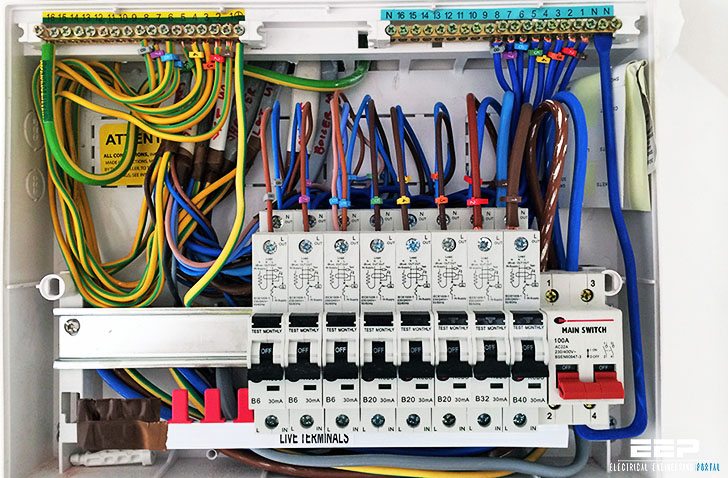Wiring errors and problems have become too familiar, and if mishandled, they can result in short circuits, sparks, and even fires. An electrical box or a junction box is a plastic or metal box with wire links inside it. They aid in the prevention of short circuits, which can result in fires. A junction box makes wire access simple. They often shield wiring from the elements and the atmosphere, which may be corrosive or otherwise hazardous to wiring. Finally, junction boxes keep wiring safe from tampering, whether deliberate or accidental.
Since faults or defects in the system pose a significant risk of electrocution, fire damage, and short circuits, it is critical to have proper electrical connections in your home, workplace, or place of business. If you work in the electrical industry or are working on a project yourself, there are a few widespread blunders to avoid at all costs.
Table of Contents
Wiring Outside A Junction Box
It is crucial to connect wires via an electrical junction box to be secured. The use of junction boxes is to protect wire connections from accidental damage and to prevent electrical fires. They do so by containing heat and sparks produced by loose connections or short circuits.
Attach a box and reconnect the wires inside it if you see an unmade link in a junction box. It is a simple activity that you can complete at home, but if you are unsure, you may want to employ an electrician to complete the task for you.
Using a Junction Box That Is Too Small
The wires inside the junction box will be stuffed together, and the box will be over-filled if you don’t use the right-sized junction box. Overheating and short circuits are more likely to occur when crowding wires into a small room. Since this can pose a fire hazard, you should adhere to the proper box size requirements.
Purchasing a larger box is the solution to this electrical wiring error. However, finding the correct size box for your protection needs is easier said than done because you need to consider many variables. To begin, you must count all of the things in the package, including the hot and neutral wires, ground wires, and cable clamps. Finally, you should count two for each unit, including switches and outlets but not light fixtures.
Junction Boxes Hidden Behind Walls
It’s a possible fire hazard when a junction box is hidden behind a flammable wall surface like wood—the chance of stray sparks or heat igniting the surface increases when combustible wall material is exposed.
If you come across a junction box recessed behind the wall, it is best to fix the issue by installing a metal or plastic box extension. If you’re using a metal extension on a plastic box, use a grounding clip and a short piece of wire to attach the metal extension to the box’s ground wire.
Wires That Have Been Cut Too Short
Making proper connections becomes more complicated if the wiring is cut too short, which presents significant danger. Short circuits, overheating, and other electrical problems can all be the result of poor connections.
You might think there’s nothing you can do to lengthen a wire after cutting it. There is, nevertheless, a simple solution. On existing wires, you can install 6-inch extensions. Hardware stores and home improvement centers sell wire connections that are easy to mount in tight spaces.
Plastic-Sheathed Cables Exposed
If you’re using plastic-coated cables, make sure they’re safe from framing participants. Connect vulnerable cables with small boards, mainly if they run over or under ceiling and wall framing. Unprotected cables are hazardous, and the electrical code prohibits leaving them exposed between framing.
You should protect the exposed cables by nailing or screwing a 12-inch-thick board next to it. It is not necessary to staple the cable to the frame. If you’re running the wire along a wall, a metal conduit is a good option.
Cables and Wires That Aren’t Stable
Fix wires and cables with a clamp when mounting them to avoid damage and strained connections. The type of junction box you use determines the clamps you should use. Single plastic boxes do not need built-in cable clamps, but you must staple cables within 8 inches of the box. Larger plastic boxes need internal clamps, and you should staple cables within 12 inches of the box. Since sharp box edges can harm wiring, use licensed cable clamps for metal junction boxes.
Unsupported Outlets and Switches
Switches and outlets that are loosely attached or unsupported can be a safety threat and look messy. They can switch around or be pulled during use, causing damage to the link between terminals and wires. As a result, the risk of overheating and arcing increases, potentially resulting in short circuits and fires.
To make a tight connection to the junction box, shim under the screws. Spacers, which we can find at home improvement stores or hardware stores, can do this. You can also use a coil of wire or a small washer wrapped around the screw for this.
By following the steps given above, you will be able to get rid of the most common electrical mistakes and protect your homes from extreme electrical hazards.


1 comment
[…] If you work in the electrical industry or are working on a project yourself, there are a few widespread blunders to avoid at all costs. […]